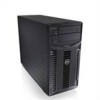Dell PowerEdge T410 Deploying UEFI-Aware Operating Systems on Dell PowerEdg - Page 4
History, What is UEFI? - drivers
 |
View all Dell PowerEdge T410 manuals
Add to My Manuals
Save this manual to your list of manuals |
Page 4 highlights
History In the mid‐1990s during the development of Intel's Itanium‐based system, PC BIOS limitations (for example, 16‐bit processor mode, 1 MB addressable space, PC AT hardware dependencies, etc.) hindered platform development for Itanium. While the Itanium chip was not well received, the development exposed significant limitations to the original PC firmware architecture that led to the development of a new framework, called Extensible Firmware Interface (EFI). In 2005, several leading tech companies came together to create the EFI Forum. Based on EFI architecture, the UEFI Forum's mission was to create the first ever industry standard firmware interface specification - Unified Extensible Firmware Interface (UEFI). Dell is represented on the board of directors of the UEFI Forum. What is UEFI? The UEFI specification defines an interface between operating systems and platform firmware. The interface consists of data tables that contain platform‐related information, plus boot and runtime service calls that are available to the operating system and its loader. Together, these provide a standard, modern environment for booting an operating system and running pre‐boot applications. In addition to the services, UEFI defines various protocols/APIs to access various hardware and the boot devices in the system. The UEFI specification also defines a driver model that is generic and can be adapted to any type of bus or device. The UEFI Driver Model is designed to support the execution of modular pieces of code, known as drivers, that run in the preboot environment. These drivers may manage or control hardware buses and devices on the platform, or they may provide some software‐derived, platform‐specific service. There are 3 types of entities that can execute under UEFI environment: Applications: Some examples of common EFI applications include the EFI shell, EFI shell commands, flash utilities, and diagnostic utilities. It is perfectly acceptable to invoke EFI applications from inside other EFI applications. Operating System Loader: A special type of EFI application, called an operating system boot loader, provides the necessary initialization routines until the loader has set up enough of the operating system infrastructure to be ready to assume ownership of the system resources. Once the operating system assumes control, the EFI core frees all of its boot time services and drivers, leaving only the run‐time services and drivers. Drivers: EFI drivers differ from EFI applications in that the driver stays resident in memory unless an error is returned from the driver's entry point. The EFI core firmware, the boot manager, or other EFI applications may load drivers. Page 2













